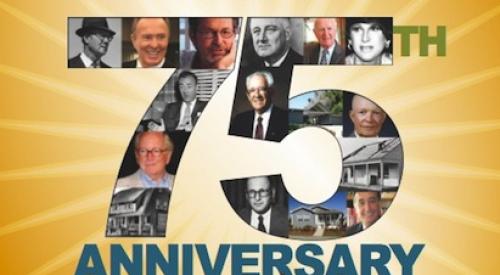|
Battered by an energy crisis, record inflation, and high interest rates, the housing industry came through this 10-year period bruised but not beaten.
Baby boomers came of age in the '70s and '80s and began forming households, renting apartments and buying homes. As a result, 1978 marked the all-time high for yearly housing starts — 2,020,300 — a record that has not been broken.
New urbanism/traditional neighborhood development was introduced through Seaside, a beachfront project in Walton County, Fla., from developers Robert Davis and architects Andres Duany and Elizabeth Plater-Zyberk.
With the enactment of the Federal Manufactured Home Construction and Safety Standards of 1976, mobile homes become known as manufactured or "HUD Code" homes. Before then, the lack of regulatory oversight made the quality of these homes uncertain and prompted many local governments to restrict or ban their use.
Some of the largest housing Giants of this time were U.S. Home Corp., Centex, Lincoln Property Co., Kaufman & Broad (now KB Homes) and Pulte.
 |
The Arab Oil Embargo of 1973 cut the supply of oil to the United States and several other Western European countries and elevated prices to then record levels. Long gas lines were a common sight.
The harsh winter of 1976–77 brought high energy bills. President Jimmy Carter, who took office in 1977, declared the energy shortage "permanent" and created the U.S. Department of Energy to address ways of dealing with overdependence on Middle East oil and other energy problems.
From 1973 to the mid-1980s, oil prices stayed at very high levels, due in part to a second oil crisis in 1979–80 caused by the Iranian revolution and the reduced production that followed. American oil production was increased to reduce dependence on foreign oil and improve end-use efficiency. Energy efficient products for the home — HVACs, lighting, solar panels and the like — gained popularity, as did more energy-sound home design. PB even published a book, "Energy and the Builder."
'80s Inflation and High Interest Rates
The early '80s was a time of high inflation and record-breaking interest rates — as high as 21 percent. By 1981, the total number of housing starts had declined to almost half the number in 1978 (down to $1,084,200.00). The country experienced a deep recession in 1982. Unemployment was as high as 10 percent. Because of the difficulty home buyers had in affording a mortgage, the housing industry nearly collapsed. But by 1983, inflation had eased, the economy had rebounded, and the country began a sustained period of economic growth. A housing recovery began in 1983.
70th Anniversary Article Series
- 1936-1945 Depression and War
- 1946-1955 Driving Toward Profit
- 1956-1965 Baby Boom
- 1966-1975 A Revolution
- 1976-1985 Low Energy
- 1986-1995 Clearing the Fog
- 1996-2006 The Big Boom
|











